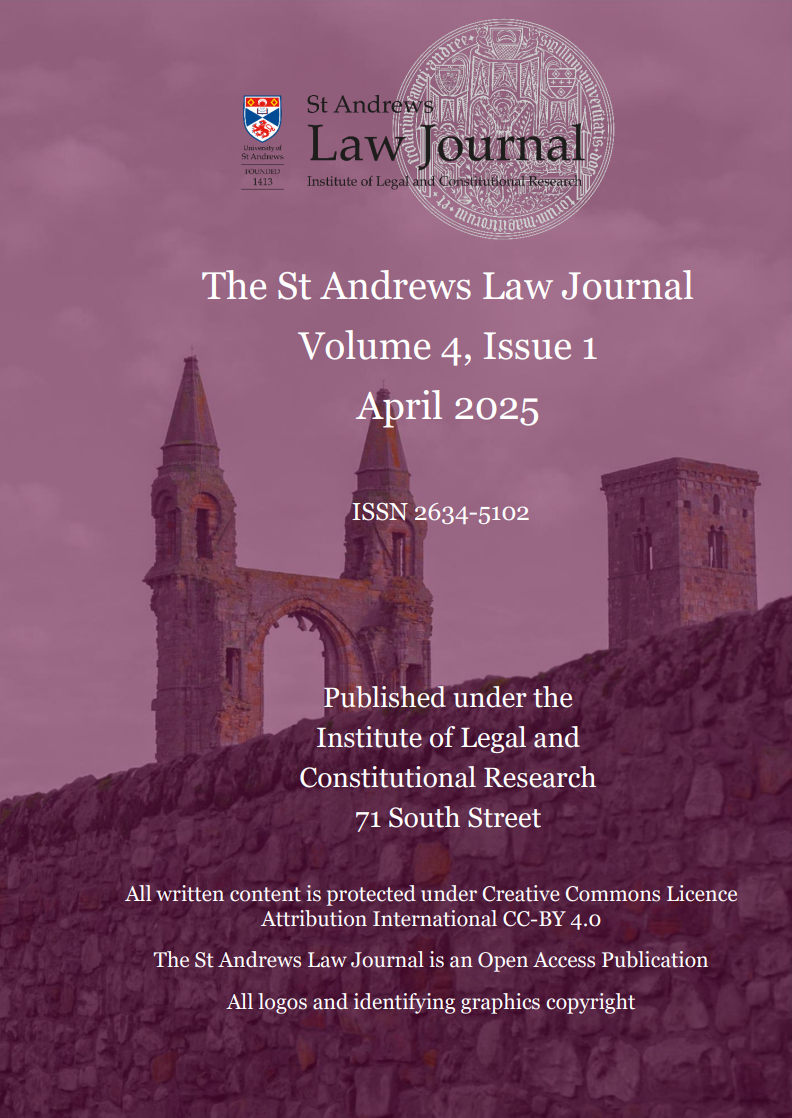A Consideration of the Legality of U.S. Targeted Killings in Pakistan Under International Human Rights Law
Main Article Content
Abstract
In the wake of atrocities, the international system has forged legal frameworks that regulate state action, however, the ever-evolving nuances of the framework make prosecuting difficult. International Humanitarian Law (IHL) protects civilians during an “armed conflict”.[1] If a conflict does not meet IHL’s legal threshold for an “armed conflict”, it is governed by International Human Rights Law (IHRL).[2] State actions to combat terrorism threats, especially in a military counterterrorism model, have more protections under IHRL than IHL.[3] The United State’s justifications for the War on Terror (WOT) challenge the current legal system by arguing that IHL should adapt to allow states to address “new” transnational terrorism threats.[4] When discussing legality, it is important to note that the law is not always moral or effective. This article limits its scope to the execution of the WOT in Pakistan through a legal perspective and highlights the use of drone strikes. I will argue that the use of drone strikes for targeted killings in Pakistan is illegal under IHRL because it does not meet the necessary legal criteria. First, I will illustrate that conflict within Pakistan does not meet the minimum organizational and intensity requirements to be classified as an “armed conflict” and is, therefore, governed by IHRL rather than IHL. Secondly, I will demonstrate that U.S. drone strikes within Pakistan were not legal under IHRL because they have become the default policy, violate Just War principles, and do not seek less lethal means.
[1] International Committee of the Red Cross, “ICRC, IHL and the Challenges of Contemporary Armed Conflicts,” accessed December 16, 2024, https://casebook.icrc.org/case-study/icrc-ihl-and-challenges-contemporary-armed-conflicts.
[2] Eric Heinze, “The Evolution of International Law in Light of the ‘Global War on Terror,” Review of International Studies 37, no. 3 (2011): 1069, https://doi.org/10.1017/S0260210510001014.
[3] Yolandi Meyer, “The Legality of Targeted-Killing Operations in Pakistan,” The Comparative and International Law Journal of Southern Africa 47, no. 2 (2014): 234, https://www.jstor.org/stable/24585870.
[4] “ICRC, IHL and the Challenges of Contemporary Armed Conflicts,” International Committee of the Red Cross.
Article Details

This work is licensed under a Creative Commons Attribution 4.0 International License.
Authors who publish with this journal agree to the following terms:
- Authors retain copyright and grant the journal right of first publication with the work simultaneously licensed under a Creative Commons Attribution License that allows others to share the work with an acknowledgement of the work's authorship and initial publication in this journal.
- Authors are able to enter into separate, additional contractual arrangements for the non-exclusive distribution of the journal's published version of the work (e.g., post it to an institutional repository or publish it in a book), with an acknowledgement of its initial publication in this journal.
- Authors are permitted and encouraged to post their work online (e.g., in institutional repositories or on their website) prior to and during the submission process, as it can lead to productive exchanges, as well as earlier and greater citation of published work (See The Effect of Open Access).

